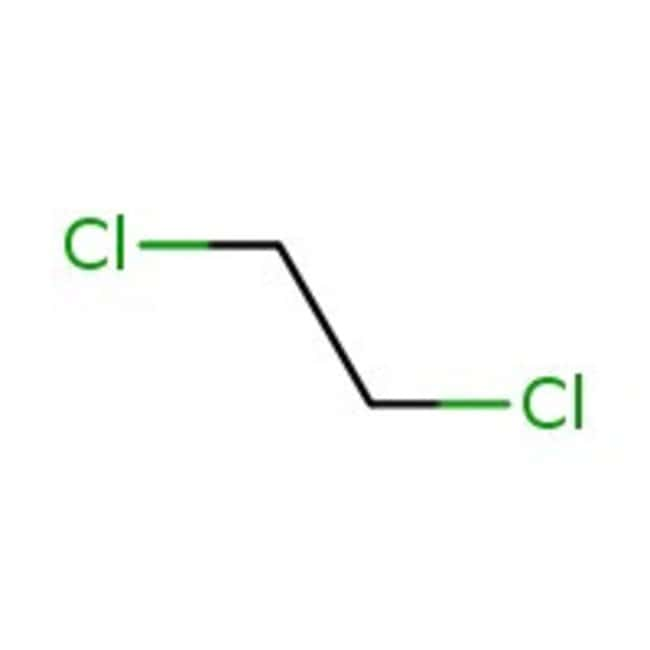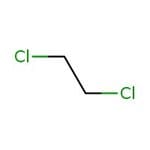Search Thermo Fisher Scientific
1,2-Dichloroethane, 99+%, Thermo Scientific Chemicals



1,2-Dichloroethane, 99+%, Thermo Scientific Chemicals
Chemical Identifiers
Specifications
Description
This Thermo Scientific Chemicals brand product was originally part of the Alfa Aesar product portfolio. Some documentation and label information may refer to the legacy brand. The original Alfa Aesar product / item code or SKU reference has not changed as a part of the brand transition to Thermo Scientific Chemicals.
1,2-Dichloroethane is used to make vinyl chloride and chlorinated solvents (trichloroethane, trichloroethylene, perchloroethylene, and vinylidene) to remove grease, resins, glue and dirt. It is used as a solvent in the manufacture of polystyrene and SBR latex. It is added to leaded petrol as an anti-knock compound. It is also used in polyvinyl chloride (PVC) pipes, packaging materials, furniture, auto mobile parts, wall coverings and housewares. It is also used generally as an intermediate for other organic chemical compounds and as a solvent. It is a useful solvent for the isomer distribution in the acetylation of benzene and toluene under the influence of aluminum chloride.
Solubility
Miscible with methanol, diethyl ether, n-octanol and acetone. Very slightly miscible with water.
Notes
Incompatible with strong oxidizing agents, strong reducing agents, bases and alkali metals.
Figures
Documents & Downloads
Certificates
Frequently asked questions (FAQs)
Citations & References
Safety and Handling
Classification of the substance or mixture
CLP classification - Regulation(EC) No 1272/2008
Label Elements
Signal Word
Danger
Hazard Statements
H302 - Harmful if swallowed
H315 - Causes skin irritation
H319 - Causes serious eye irritation
H331 - Toxic if inhaled
H335 - May cause respiratory irritation
H336 - May cause drowsiness or dizziness
H350 - May cause cancer
Physical Hazards
H225 - Highly flammable liquid and vapor
Precautionary Statements
P210 - Keep away from heat, hot surfaces, sparks, open flames and other ignition sources. No smoking
P280 - Wear protective gloves/protective clothing/eye protection/face protection
P301 + P330 + P331 - IF SWALLOWED: rinse mouth. Do NOT induce vomiting
P303 + P361 + P353 - IF ON SKIN (or hair): Take off immediately all contaminated clothing. Rinse skin with water or shower
P304 + P340 - IF INHALED: Remove person to fresh air and keep comfortable for breathing
P305 + P351 + P338 - IF IN EYES: Rinse cautiously with water for several minutes. Remove contact lenses, if present and easy to do. Continue rinsing
P311 - Call a POISON CENTER or doctor/physician
Additional EU labelling
Restricted to professional users